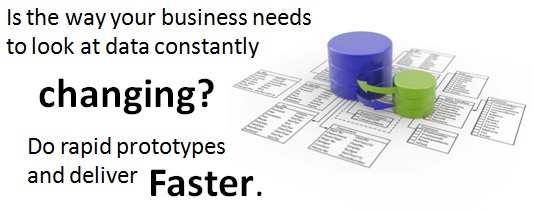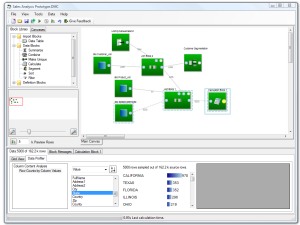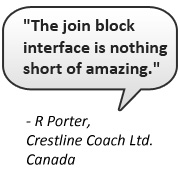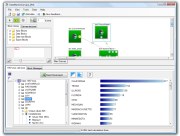
Datamartist is a desktop Extract, Transform and Load (ETL) tool that lets you get to the data, and transform it the way you want.
- Mix data from multiple sources in a powerful, flexible data canvas.
- Explore the data, try different transformations, use data profiling to find data quality issues.
- Once you have the data where you want it, automate your transformations – Datamartist can be run from the command line in server mode, generating log files.
Data Analysis drives many IT department requests
We know what its like in the information technology department. Fixed resources, unlimited requests for data. Often, a useful approach is to build quick, flexible data transformations that can
- Clairify and solidify the functional requirements.
- Identify any data or data quality issues in the source system.
- Create new data structures and organisations quickly to illustrate concepts and try transformation rules.
By providing a flexible, visual environment that lets you build star schemas, Datamartist lets you rapidly build analysis and get the results to the users for feedback in hours not days.
Have you ever had requests for data analysis that were more effort than they should have been? Did data quality and the need to access multiple data sources turn a simple request into a significant amount of SQL coding and change requests?
By providing many of the basic features of more powerful ETL tools right on the desktop, Datamartist gives you a right sized option to do the data transformation that will let your users get to their data analysis quickly, while you don’t end up spending hours or days messing with custom development.
In many cases, you’ll find what they needed was a quick answer, and the Datamartist canvas has provided the data transforms needed to answer the question. When you can use a desktop tool to get this answer in minutes, you provide a quick response, and users get back to the data analysis, rather than complaining about how long it takes to get the data.
If a new data warehouse or data mart is required, having mocked up key parts of the ETL and run real data through it with datamartist will save you development and design time, and help clarify the scope. How many times have your users told you “Thats what we asked for, but now that we see it, it’s not what we need.”? Do the mockup quickly, and find this out before you’ve invested all the time building the whole ETL.
Add an ETL data scratch-pad to your arsenal that lets you quickly transform data on your desktop, and keep up with demand.
Datamartist is not based on a standard relational database. Because of this, it has data type flexibility. You can store mutliple data types in the same column. This means that multiple data sets can be seemlessly blended together, even if data is stored in different formats, then data transformations can clean up the differences.
You know how often the business users need to change the data analysis they are doing- either because the business is changing, or because there were unforeseen reporting needs. The data analysis they do is often of a critical and high profile nature. Deliver the data that they need faster by using the right tools for the job.
Data migration and data migration planning
- Pull in data from multiple sources and transform it for data migration.
- Create a reproducible, controlled data migration task that ensures the same migration is done through multiple runs.
- Migrate data from different data types easily, using Datamartists flexible data types.
- Rename columns, parse text fields, calculate new measures and join together tables without having to write SQL code.
For small to mid sized data migration tasks, Datamartist might be the only tool required. But creating prototypes with Datamartist for extremely large and complex migration tasks will help plan the data migration, and map out the various data mappings and transformations required. Data migration is a complex, involved task that is highly sensitive to data quality issues in the source data systems.
With Datamartist you can:
- Quickly pull in tables from multiple sources
- Profile the data graphically
- Merge together tables regardless of data types or field formats
- Transform data quickly and easily using Excel like functions
- Export data into various formats for futher use
- Browse the Datamartist documentation.
- Compare Datamartist functionality to spreadsheets and databases.
- Datamartist at Democamp Toronto.
- Datamartist at the Financial Technology Show.






